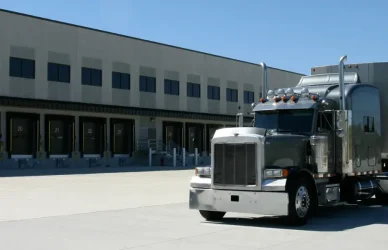New data from the Labor Department reveals a mixed picture of inflation trends. The consumer price index increased by 3.7% in August compared to last year, with a notable increase in fuel prices.
When excluding volatile categories like food and energy, however, core prices only rose by 4.3%, the smallest increase in nearly two years.
This suggests that price pressures are gradually easing, although it is still far from the Federal Reserve’s target of 2%. Gas and diesel prices were the main culprits behind the monthly inflation increase, accounting for over half of the rise.
The average price of a gallon of diesel fuel in the U.S. currently sits at $4.540, according to the Energy Information Administration (EIA). This is a slight increase from previous weeks.
Despite these differing figures, the decrease in core prices indicates that inflation is being brought under control, although at a slower pace than earlier this year. The Federal Reserve monitors core prices closely as they provide a better indication of future inflation trends.
It is widely expected that the Fed will not increase interest rates at its upcoming meeting. However, the possibility of another rate increase later in the year, possibly in November or December, is still on the table due to a slightly faster increase in core prices in August compared to July.
The latest report suggests that while inflation decreased rapidly in the spring and summer, future declines will be more gradual. In June, inflation dropped to 3% from a peak of 9.1% in June 2022. Economists believe that some of the factors that previously lowered prices, such as lower gas prices and improved supply chains, have already had their impact and are no longer as influential.
“We’re getting to the stage where we’ve basically had all the low hanging fruit in terms of disinflation,” said Blerina Uruci, an economist at T. Rowe Price. “The progress on core inflation over the coming months is going to be slow and it’s going to be uneven.”
In August, consumer prices experienced the largest monthly increase in over a year, with a jump of 0.6%. Gas prices saw a significant spike of nearly 11%, although they have since stabilized. The average nationwide price at the pump remains unchanged from a month ago at $3.85, according to AAA.
When excluding food and energy, core prices only rose by 0.3% in August compared to July, showing a slight increase from the previous two months’ 0.2%.
Energy costs specifically rose by 5.6% in August, marking the biggest monthly increase since June 2022. Auto insurance prices also surged, rising 2.4% last month and 19.1% compared to a year ago. The rise in new car prices over the past two years has contributed to higher insurance and repair costs.
After experiencing significant declines for two months, airfares spiked by 4.9% in August compared to July. On the other hand, used car costs decreased by 1.2% for the third consecutive month, while hotel prices also fell by 3% for the third straight time.
Grocery prices rose by 0.2%, putting a strain on many households’ finances. However, the rate of increase in food costs has slowed down, with a 3% rise compared to the previous year, which is much lower than the double-digit increases seen last year.
Although prices are increasing at a slower pace, it’s evident that Americans are still feeling the impact as costs for food, rent, automobiles, and appliances remain considerably higher than they were two years ago.
Francesca, a resident of Falls Church, Virginia, who chose not to disclose her last name, expressed her concern about the rising prices, particularly when she fills up her car with gas and sees the increase in her grocery bill.
“We’re not buying crazy things, like caviar, just the basics,” she said, referring to her weekly food shopping. “And it’s like $150,” compared to a tab of closer to $100 before the pandemic.
Federal Reserve officials are beginning to believe that inflation is being brought under control, however, Chair Jerome Powell has cautioned that it is still too high. In a recent speech, Powell stated that the Fed will proceed cautiously with any further rate hikes. This statement has led many economists to believe that the Fed may skip a rate increase at its upcoming meeting. When the Fed raises its key rate, it often results in higher costs for mortgages, auto loans, and business borrowing.
Over the past year, the Fed has raised its benchmark interest rate 11 times, bringing it to 5.4%, the highest level in over two decades. The rate was increased by a quarter-point in July, following no change in June.
Lorie Logan, the president of the Federal Reserve’s Dallas branch, expressed that skipping a rate hike at the September meeting could be appropriate, however, she clarified that skipping does not mean stopping.
According to CME’s FedWatch, Wall Street traders believe there is only a 3% chance of a rate hike in the upcoming meeting. However, they have priced in a 40% chance for an increase at the Fed’s meeting in November.
According to Tim Duy, the chief U.S. economist at SGH Macro, the report indicates that there may be another rate hike this year due to sticky prices. Duy also mentions that despite concerns about an impending recession, the economy is actually growing at a healthy pace. Americans have been spending more at restaurants and retailers, and there has been consistent hiring.
One potential risk of this steady growth is the possibility of higher inflation pressures. Companies are increasing pay to attract and retain employees, which is beneficial for workers but may lead to higher prices.
There have been strikes and labor disputes this year that could result in further wage increases. The Teamsters and American Airline pilots have already secured higher pay in recent negotiations, while the United Auto Workers are also seeking higher wages from major U.S. automakers. Incomes for most Americans have been falling behind inflation in the past two years, but economists expect workers to continue pushing for higher pay to make up for this loss.
Meanwhile, the European Central Bank is considering raising its key interest rate at its upcoming meeting. Given the European economy’s struggle with high inflation and rising borrowing costs, however, officials may choose to skip an increase. The European Commission has issued a pessimistic forecast, predicting that the 20 countries using the euro currency will only grow by 0.8% this year. Germany, the largest economy in the European Union, is projected to shrink by 0.4%. Although inflation in the EU is higher than in the U.S., it has decreased from its peak in October.
Source: The Trucker











